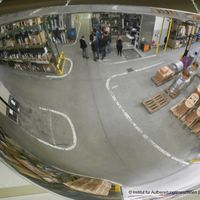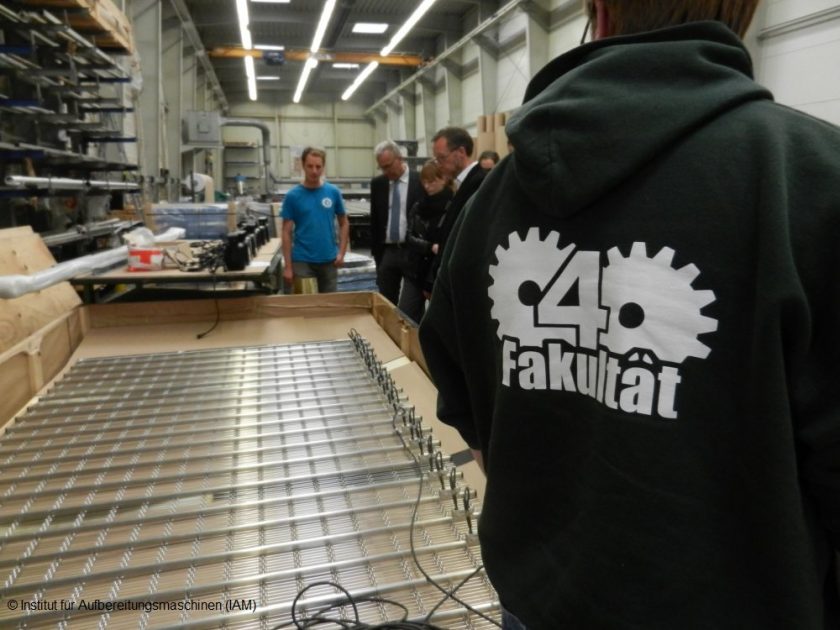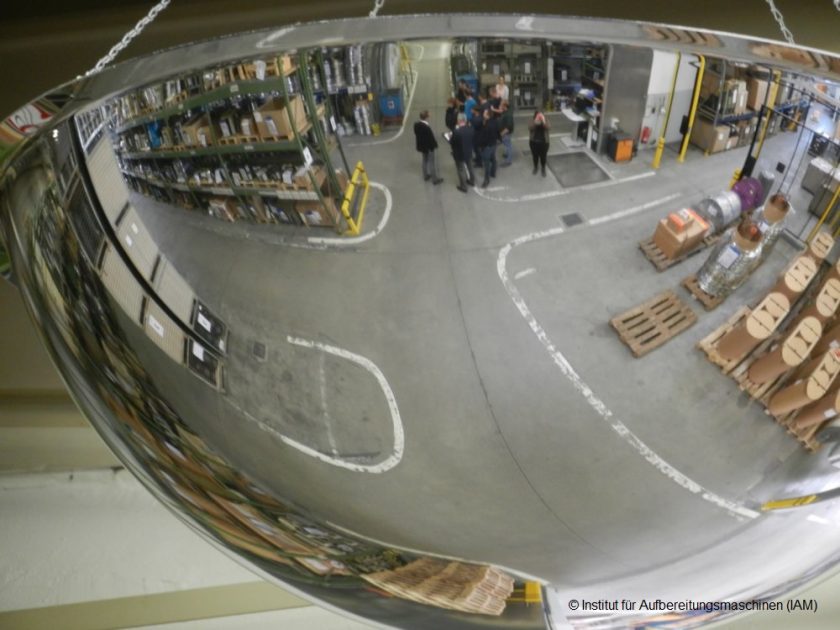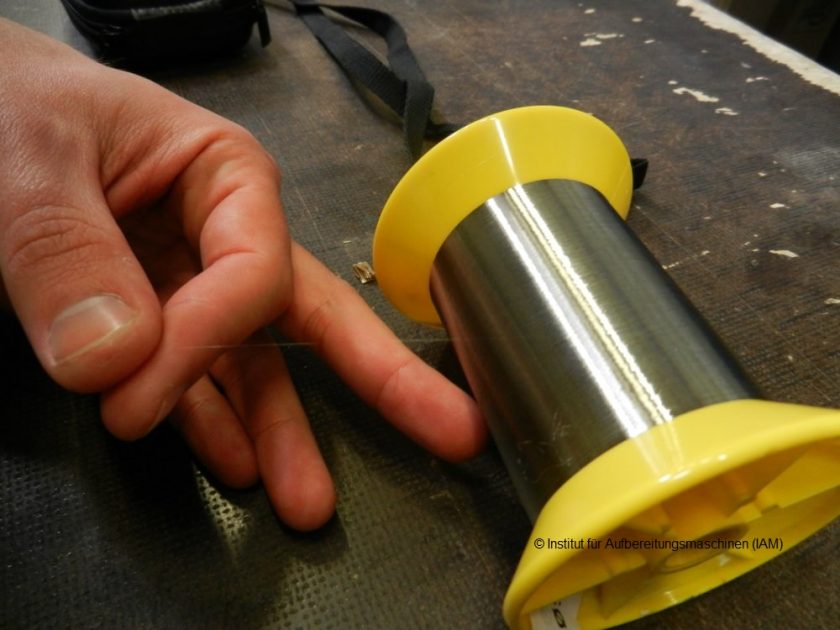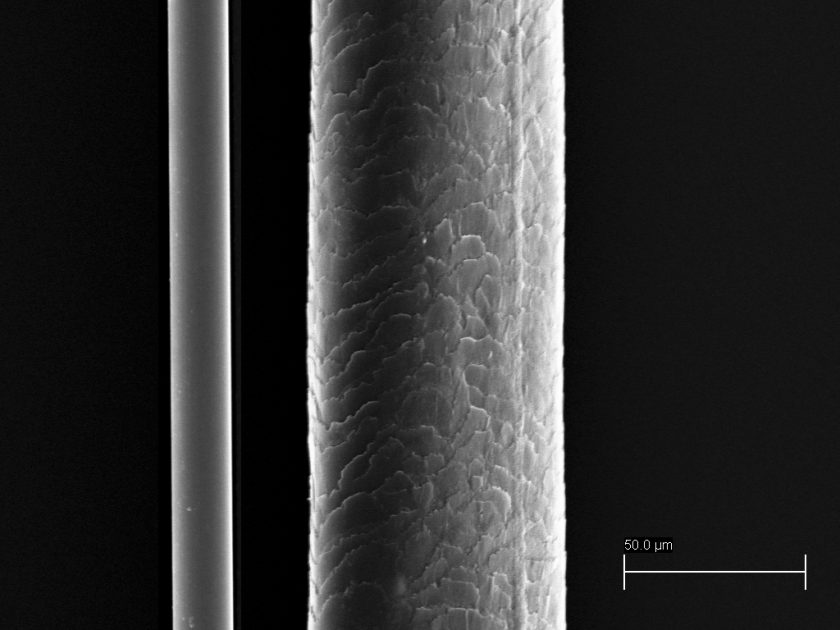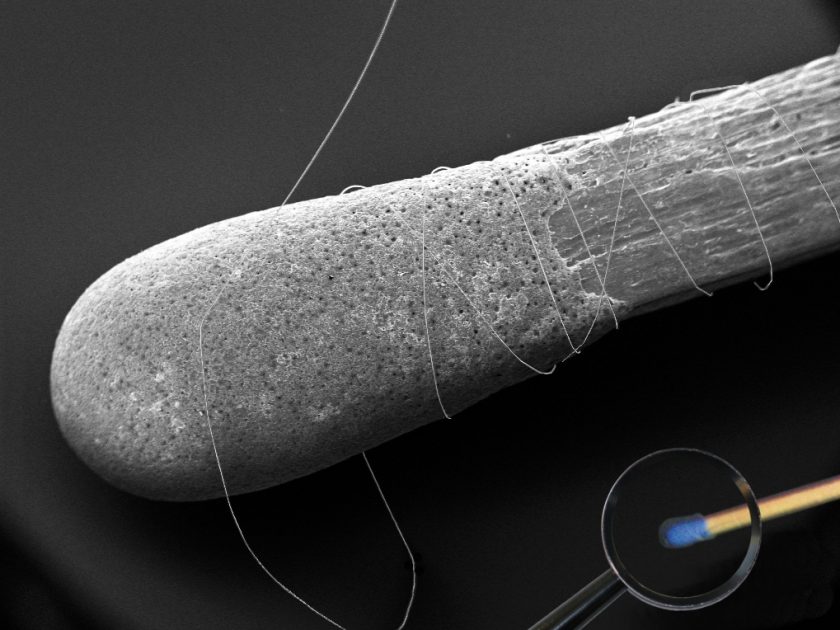Both make use of wire mesh of the medium-sized family business Haver & Boecker OHG in Oelde, founded in 1887!
On Monday, 08 October, our group of students and staff of the Institute of Mineral Processing Machines (IAM) visited the wire weaving division – one of the two business units of Haver & Boecker – in Oelde. After arriving from Freiberg, we received a warm welcome during a joint lunch by the company’s managing partner, Mr. Walter Haver, as well as Mr. Michael Stichling – responsible for the field of industrial wire screens.
A short presentation on its history and the current product portfolio was followed by an interesting tour of the company. Starting with the delivery and inspection of the wires, we were shown the complete manufacturing process of the 3,600 different specifications of wire mesh products. Haver & Boecker’s wire weaving division – also known as “Die Drahtweber” – produces precision fabrics out of wires between 15 μm and 6.3 mm in diameter in Oelde. 15 μm – i.e. 0.015 mm – is a much thinner diameter than the one of a human hair, which has a diameter of 0.04 – 0.1 mm! No wonder that Mr. Stichling did not immediately find the end of the wire on the spool 😉
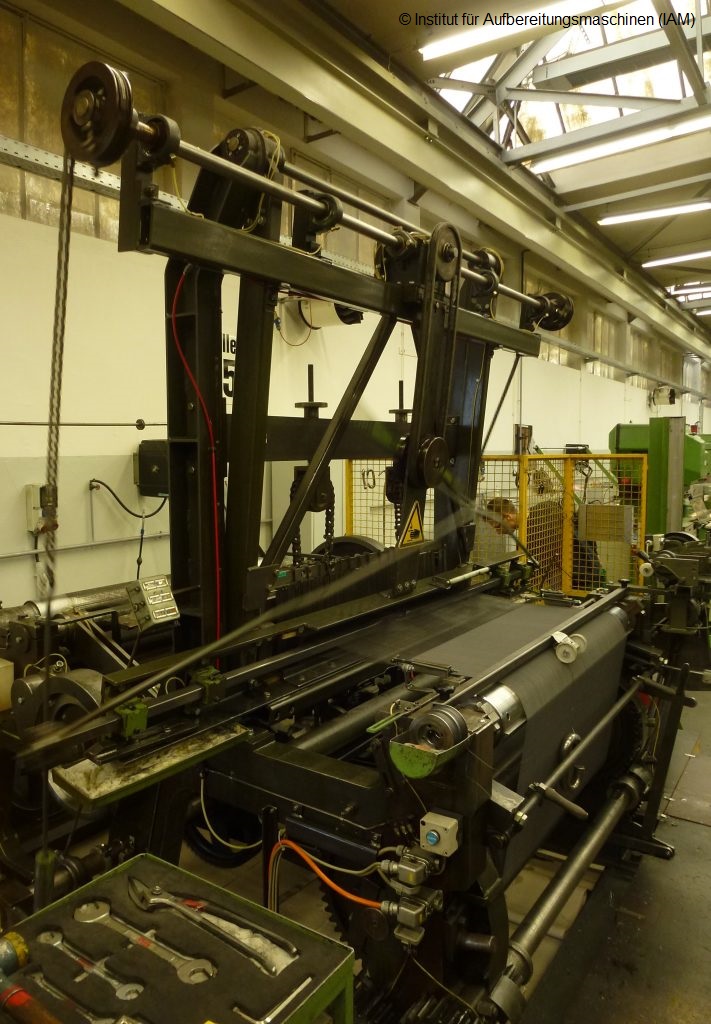
Stronger wires of up to 12 mm and 20 mm, respectively, are processed at the Belgian subsiduary and at Haver & Boecker in Canada. The wire screens are made on weaving machines, just like in textile weaving; however, these special wire looms are produced in-house in order to meet the particular demands of wire threads.
The fabricated wire meshes are used in the fields of architecture, screening, filtration and metrology, e.g. for medical applications, latest ultrasound screens for finest powders and mineral raw materials, autocatalysts as well as architectural cladding, i.a. in the German Bundestag or the Dusseldorf International Airport.
Mr. Stichling generously took time to answer the numerous questions of our students, the director of the Institute of Mineral Processing Machines, Prof. Lieberwirth, as well as his two research assistants, Tim Hühnerfürst and Richard Kühnel.
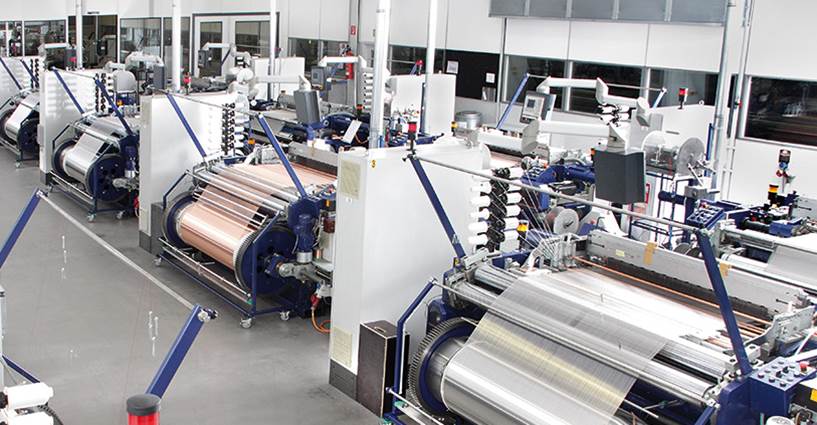
After the eventful visit of the company, we stopped for a bite to eat at the local brewery “Pott’s” and let the first evening of our field trip end in a relaxed atmosphere 🙂
By the way, if you are wondering about the connection of gummy bears and Haver & Boecker wire meshes, you will find some enlightenment by watching the following episode of the German documentary “Die Sendung mit der Maus“: In this video, the making of gummy bears is vividly explained. At the end of the production process, the gummi bears have to be removed from their cornmeal moulds by means of a drum screen just like the ones that are produced by Haver & Boecker 😉
And what about the link to the microphones? So that they can withstand the destructive forces during live performances of some hard rock band singers, and in order to protect the inner workings of these microphones, they now receive a special impact protection from a renowned manufacturer – made of high-quality steel fabric supplied by Haver & Boecker!
The Rhineland field trip is just one example of the great practical orientation of the studies at our Institute of Mineral Processing Machines! Stay tuned to our upcoming blog posts with our RSS feed, as we will report on our further visits to companies in the field of processing technologies throughout this week!

